Suunto ZoneSense
-
@Brad_Olwin I’m going to put this down to the fault of the chest-strap so bad data in, bad data out. I’ve included screenshots of the R-R intervals under HRV in Runalyze:
Bad data:

Good data:

Thanks for having a look!
-
@Stephen-Kenny I find that really weird because, in my case, the values on the watch and in the app are exactly the same.
-
@andrewjknox Now I know that you can flat line ZS with bad data. The fabric part of HR belts does not last forever. Mine give up after a year or a bit more.
-
@andrewjknox Dear Andrew,
I observed such results too. After lots of trials I came to the following conclusion: ZoneSense allways works proper with my Suunto vertical. BUT: Suunto app shows ZoneSense data correct if HR-data is above 120 bpm during exercise. Maybe you have the same topic?
Have an nice sunday ! -
@Brad_Olwin Nice, hopefully others will find it useful when they see chest-straps can generate bad data when the materials start to fail and the ZS graph can look “funky”. I knew there was a risk of the internals getting compromised once you change the battery and damage the rubber ring/seal/gasket (which has happened to me (twice) - the battery life then takes a nosedive, you then start changing batteries more and more often).
Went for the same run this morning and it was okay oddly.
But I’ve ordered the Garmin HRM 200 - mainly because of the battery indicator
 I’d like to have a bit more heads-up when the battery is dying without having to check in-app (Suunto watches don’t have a sensor battery warning do they?)
I’d like to have a bit more heads-up when the battery is dying without having to check in-app (Suunto watches don’t have a sensor battery warning do they?) -
Had another try with Zonesense today with a new belt, for for me its just random
Heartrate vs Power looks good
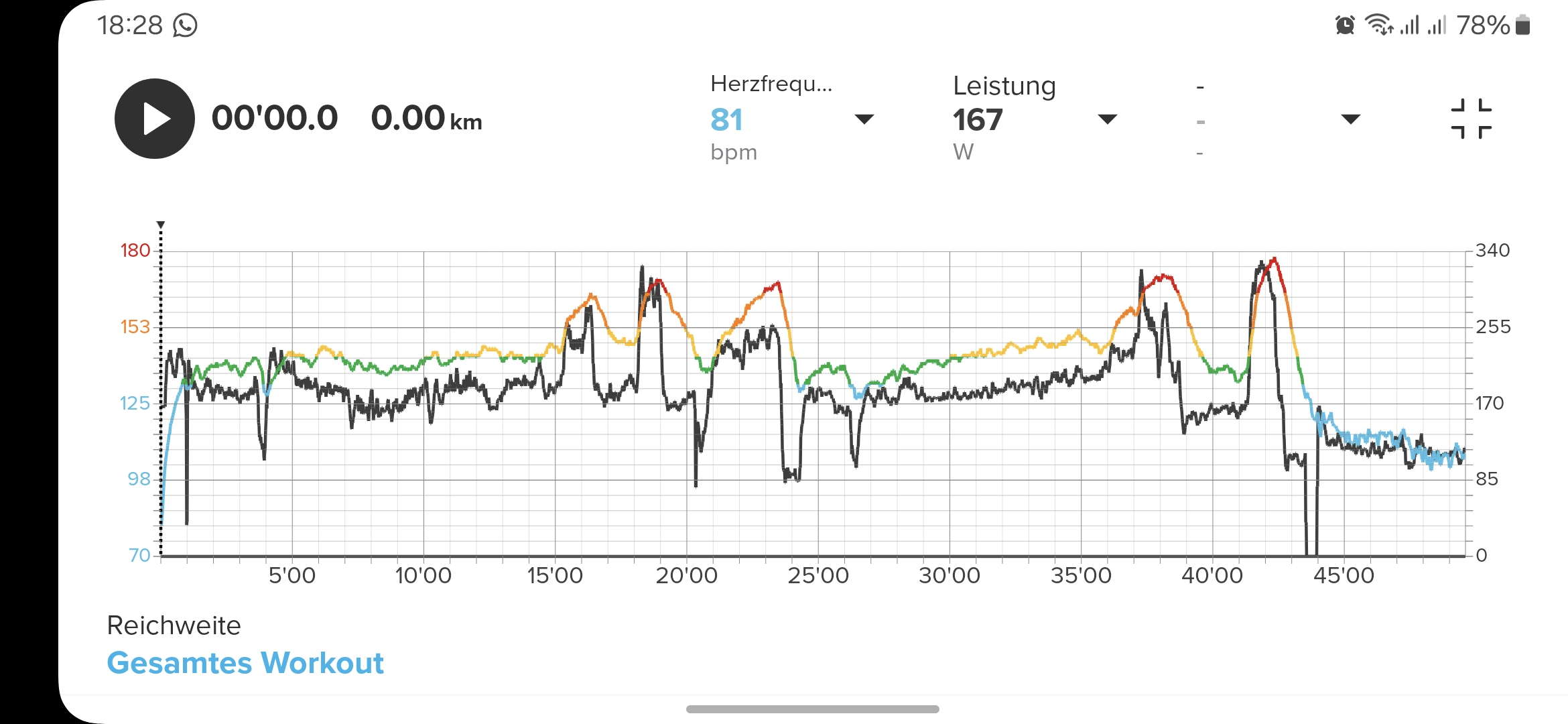
Zonesense vs Power looks… hmm
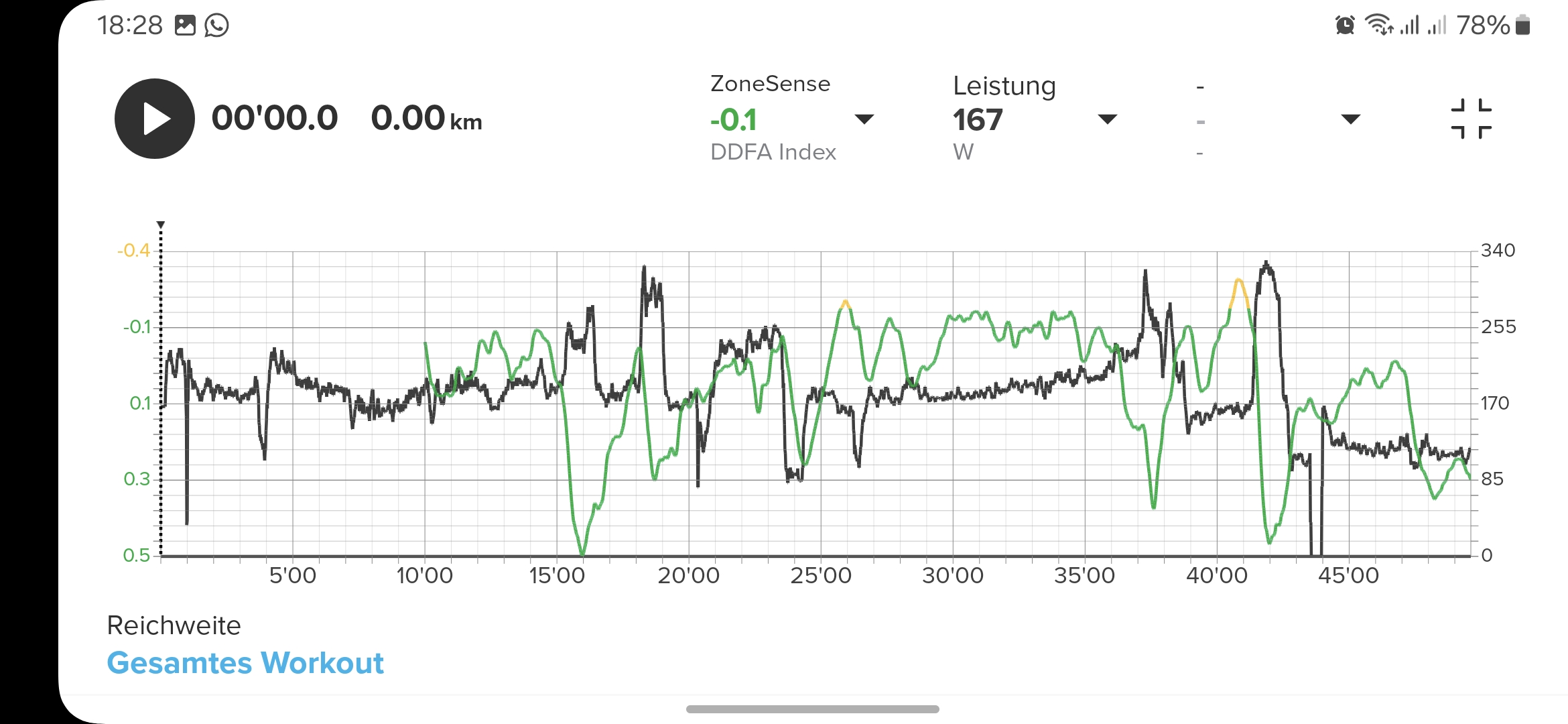
Calculated Zone is also far off in my opinion
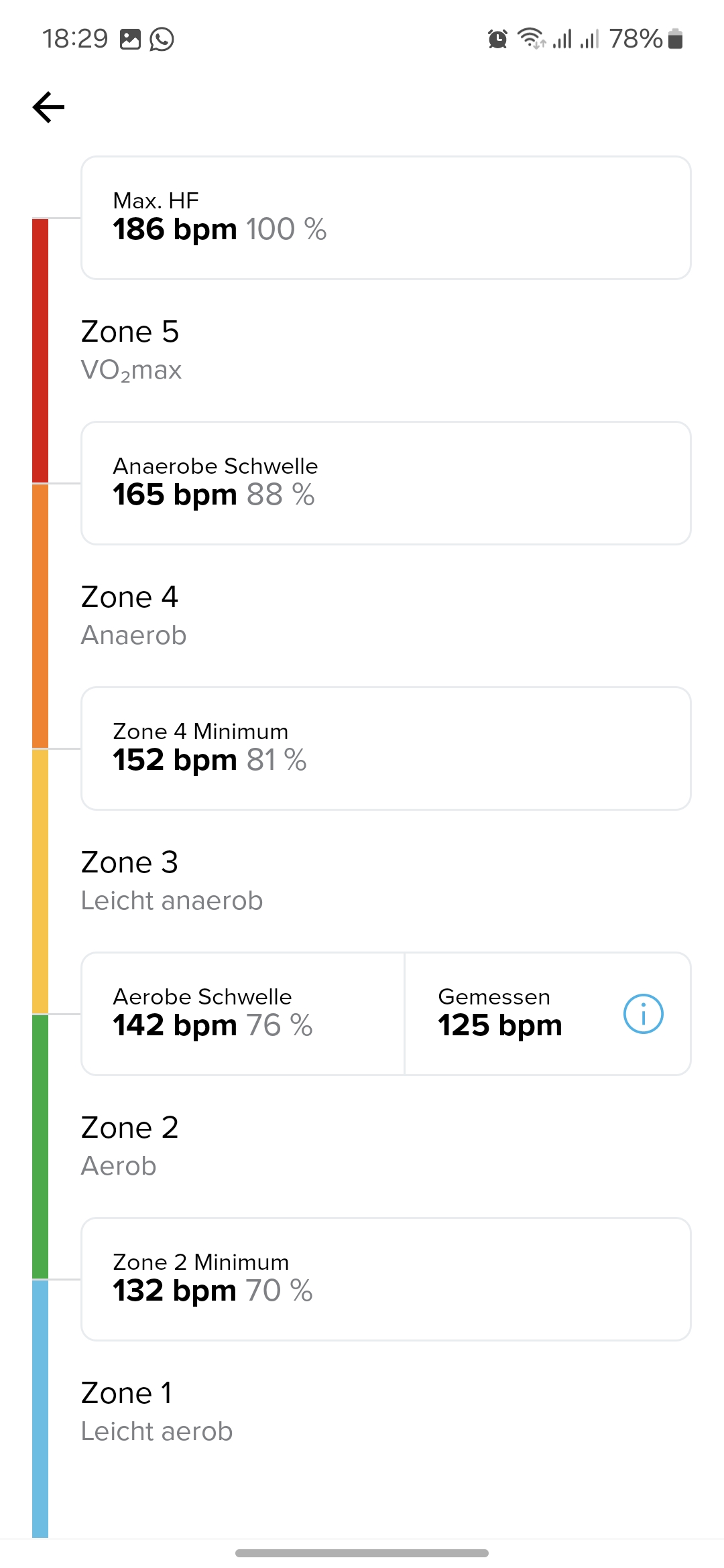
Data Quality is good, I checked it in Runalyze. Could it be that Zonesense results differ with the individuals physiology? For me it just doesn’t work, but Heartrate works very well. From belt and also OHR
-
@VoiGAS I see similar results & have posted about it above.
As the workload increases significantly ZS often suggests the complete opposite.
Someone will be along shortly to tell you that you need to read ALL the literature & watch ALL the videos before you can make any sense of it… (but won’t actually provide any answers)
All I’ve gleaned so far is that we may be running on the wrong type of trail or the hills we’re running up aren’t long enough

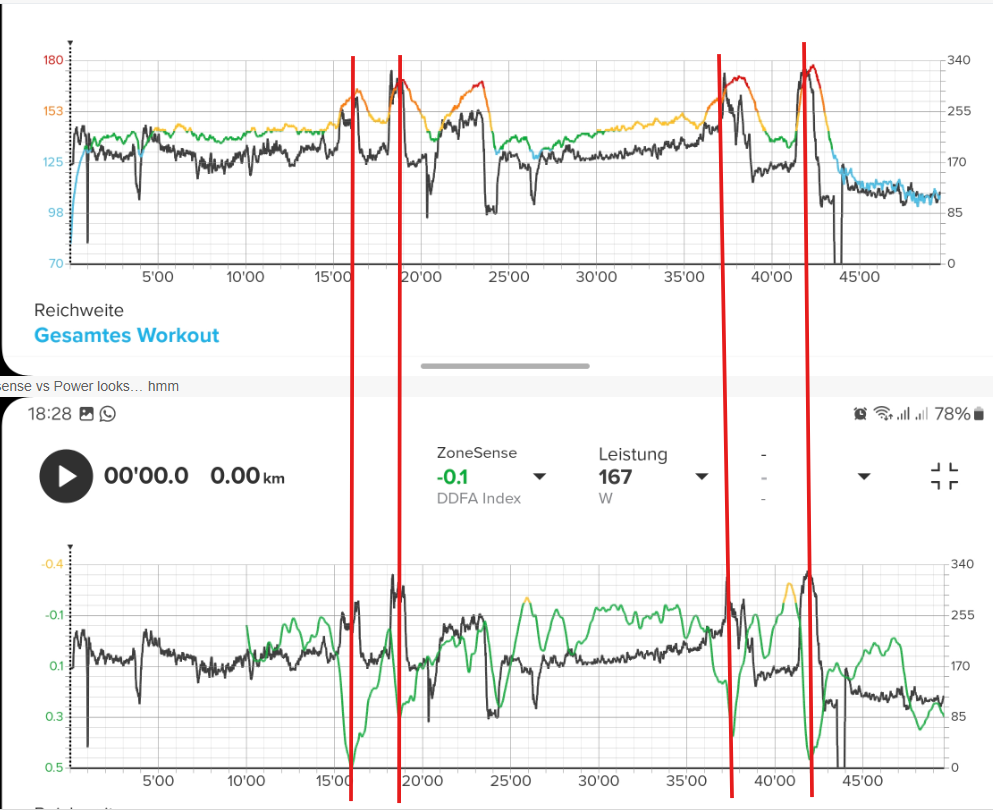
-
@Mattg576 Right, I also think it works just in special circumstances. I watched a lot of the videos and I understand it reacts slowly. But how long am I supposed to run in the red zone.
But maybe it will improve and maybe I also find a usecase for it -
@VoiGAS Janne said there is a lag of about 2 minutes that ZoneSense needs to react to something. So you need a prolonged effort of those two or three minutes to make any sense of ZoneSense. It is nothing for short periods. Also it is said that the actual curve doesn’t matter, only the color…
If you match that with your workout, you see that the increased effort beginning at your 30 minute mark pushed it in the yellow Zone about 10 minutes later.ZoneSense works best, if you have longer intervals with constant effort.
Personally I think the tool is interesting, but it doesn’t fit every job. And it is still in the early stages. When Suunto can bring down that 2 minute lag it would be even more helpful…
-
@2b2bff I know, but its not like there was no effort between the peaks. I just did them to reach the red zone. If I would have done it in a race it would have been over for me, but Zonesense signals ‘Everything is ok’.
So if it only works if I control my effort right, then I have no idea what the usecase is.Don’t get me wrong, I really love new technology like this. But how it can be a benefit I just don’t understand
-
@VoiGAS said in Suunto ZoneSense:
If I would have done it in a race it would have been over for me, but Zonesense signals ‘Everything is ok’.
I don’t doubt, your evaluation about failing in a race, but are you’re sure? Ever tried it in a race (or in racelike conditions - like tapering your load before, having enough sleep, etc.) ? That would be an interesting thing to know, if the majority of the racing people actually benefit from Zonesense in those races
 ?
? -
@Mattg576
IANAHD (I Am Not A Heart Surgeon), but…these charts almost make more sense if you consider DDFA to be HRV (which I appreciate, it isn’t really), with the bottom of the chart being high HRV (relaxed/low intensity), and the top of the chart being low HRV (stressed/high intensity).
because i would expect sharp HRV increases (the dips on the chart above) to occur when we’re moving from high effort to low effort, as the heart rate is increasing beat-to-beat. and then i would expect it to then sharply snap back to a lower HRV (the subsequent peaks in the chart) as we hit and maintain the high-effort heart rate.
i’m theory-crafting here, but we can see the dips in the DDFA chart for the high effort parts. it fees a bit like the data is telling us the story, but the zones/colour-grading isn’t being applied in a useful way. at least not for this kind of activity. over longer activities without quick and short effort changes i guess it’s more useful, but it feels like with some tweaking it could understand both scenarios.
-
@VoiGAS As I did a slightly hilly race for the first time last week, I know it is a totally different thing to a traditional race on a flat surface. Possibly I tried to be conservative with my resources I didn’t reach heart rates I usually reach when running on a flat course. As it was 6 round running up and down a smaller hill, each round about 10 minutes, I don’t think ZoneSense could have made much sense of it either. But I haven’t had a Suunto watch with me to prove it.
Long story short, my point is: possibly trail running isn’t steady enough for ZoneSense to make sense…
-
In my view, consulting ZoneSense and attempting to correlate it with conventional metrics such as pace, heart rate, or power is counterproductive. ZoneSense is not meant to be compared with these isolated metrics but rather to serve as the foundation for effort-based training, dynamically adapting to real-time physiological and perceptual inputs. Today, I completed a 45-minute trail run, and the algorithm proved to be incredibly representative of my RPE. Introducing comparisons with traditional metrics only adds unnecessary complexity without providing meaningful insights, as those metrics measure specific physiological responses rather than the holistic effort ZoneSense captures. My objective for this session was to focus on aerobic and low anaerobic work, finishing with some VO2 max efforts, guided solely by RPE. The outcome was highly satisfying, reaffirming that ZoneSense effectively translates perceived exertion into a precise and adaptive training experience, making external validation unnecessary.
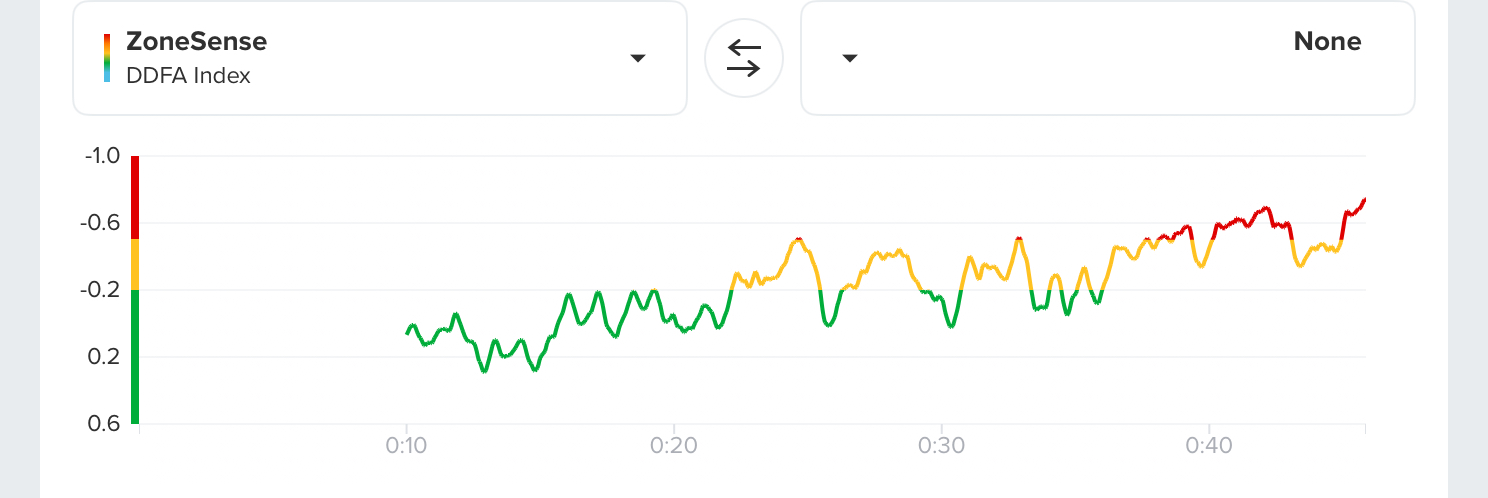
-
@ChrisA Yes, happened to me once during a half marathon. About 15 minutes running too fast after the start were enough. The rest of the race was a real pain and the result was far from my expectations.
In my experience you don’t get back what you loose running with to high effort. At least for me it is that way -
@Ghost Yes, this seems to be the usecase where it works (best).
But if you increase your intensity in a controlled manor already, why would you need Zonesense? I have no doubt that it works, I just have no idea when it could be useful
Also I would guess Heartrate would give you a similar result -
@VoiGAS HR is just HR, while ZoneSense provides results based on many more factors. @Brad_Olwin has already explained this to you multiple times, so I’m not sure you’ll truly grasp its value. That said, if ZoneSense doesn’t resonate with you, you can still train as usual. In the end, what matters most is the enjoyment of your passion for exercise, sport and nature.
For me, ZoneSense is essentially a measure of accuracy for my RPE. I enjoy training with it because factors like poor sleep, environmental changes, or hydration levels can influence my effort. Sometimes, I plan for an aerobic session but unknowingly end up in anaerobic zones. It also works seamlessly across activities like cycling, running, and jump rope, focusing solely on my real-time fatigue rather than the specific sport. I find this algorithm fascinating, but I completely understand that it’s not for everyone.
-
@Ghost said in Suunto ZoneSense:
In my view, consulting ZoneSense and attempting to correlate it with conventional metrics such as pace, heart rate, or power is counterproductive. The outcome was highly satisfying, reaffirming that ZoneSense effectively translates perceived exertion into a precise and adaptive training experience, making external validation unnecessary.
Well stated!
-
@VoiGAS said in Suunto ZoneSense:
@Ghost Yes, this seems to be the usecase where it works (best).
But if you increase your intensity in a controlled manor already, why would you need Zonesense? I have no doubt that it works, I just have no idea when it could be useful
Also I would guess Heartrate would give you a similar resultHR will not give you a similar result, this is the point! ZS takes into account fatigue, or rest and anything else including stress that is affecting you. HR is far less reliable.
-
@Brad_Olwin @Ghost : You are both right, you stated many times what it IS and I got it. What I don’t get is how it can be USED.
Sorry for not making myself clear, but maybe you have some examples how it can be helpful. Is it in training or race or both? Do you use it afterwards to verify your RPE or real time. If real time - what do you check? Just keeping it green?That are the things that I - and it looks like I am not alone - struggle with